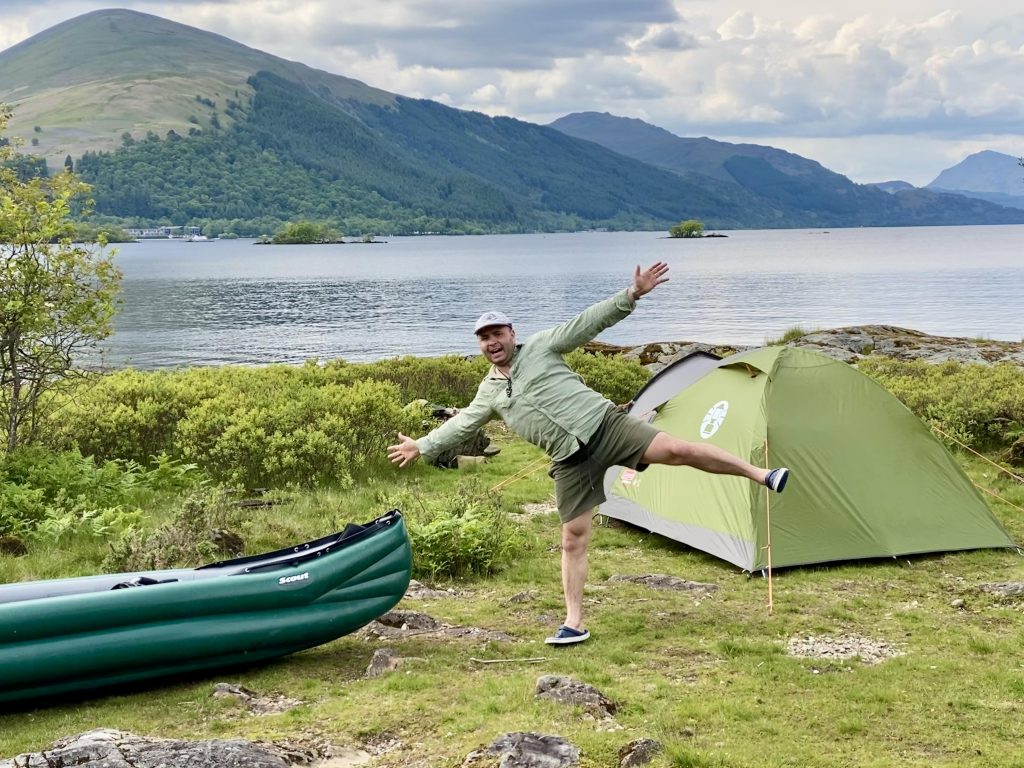Earlier this Summer, I’ve set off to my five days Scotland tour by car from Loch Lomond through the Highlands to Inverness. The tour included ascent to Ben Nevis, canoeing on Loch Ness and camping in Glen Affric. Here, then, is my beginner’s observation to the wonders of Scotland. Tips I’ve penciled in to my notebook while on my first trip.
There are some things you should definitely consider why planning your trip to Scotland. There are DOs and also DON’Ts. The main narrative here is that Scotland is about NATURE. If you love wild nature and natural landscapes this will be paradise for you. There are a few places on the planet Earth as remote and unspoiled as Scottish Highlands. This probably leads to your first question.

Is it legal to camp anywhere in Scotland?
Having said that Scotland is about nature, you may follow up with question about a legality of wild camping there. Well, thanks to the Land Reform (Scotland) Act 2003, it is perfectly legal to pitch your tent pretty much anywhere. Apart from a few exceptions. It is in fact the only country in the UK where there is a law in favour of wild camping. So you don’t have to hide anywhere or apply the arrive-late-leave-early rule, risking somebody telling you off. You can actually enjoy the camping in Scotland. So that’s one think to DO in Scotland.
How cold is the water in Loch Lomond?
My Scotland trip started by inflating my canoe in Milarrochy Bay, which is a free parking spot on Loch Lomond in The Trossachs National Park. With area of 27.8 mi² (71 km²), Loch Lomond is one of the largest piece of water in the UK. And there are 23 islands, easily reachable on kayak or canoe in my case. There is island called Inchconnachan, which is also called ‘Wallaby island’. Yes the wallabies are hopping around there. I know it because I’ve been camping there and I’ve seen them. They were introduced to the island in the 1950s by Fiona, Countess of Arran and because they have no predators, they live happily on the island ever after.
Inchconnachan island is a great place for wild camping. If you ever find yourself on one of it’s lovely beaches and decide to have a swim prepare your self for a water that has no more than 15°C during a Summer. And as always in Scotland, don’t expect a good weather. The weather tends to be very changeable. In fact, according to Wikipedia, there are 1160 sunshine hours on average per year, meaning that the sun shines just over 25% of the time in Scotland. Have you ever been swimming in rain? I was.
How long does it take to climb Ben Nevis?
Ben Nevis is the highest mountain in Scotland, the United Kingdom and the British Isles. It was once a massive active volcano, which collapsed inwards on itself. So says the board at the Ben Nevis Visitor Centre near Fort William, which is official base camp, where you can find weather information and pay-and-display car park (£8 per day). However, if you arrive early, you will find yourself a free parking spot along the Glen Nevis road.
The summit is 4,413 feet (1,345 m) and the easiest way up is from the visitor centre. The journey long 10.6 miles (17 km) will take anything from 4 hours (if you almost run) to 6 hours if you take a lot of tea breaks. However the summit obviously attracts a lot of attention. So one thing to avid is to choose weekends or even worse bank holidays for your ascent. Otherwise you risk that you be queuing to get on top, and the round trip can take up to 12 hours. Unless you set-up early (like me) at 5:00 in the morning.
How deep is Loch Ness?
After you’ve conquered the highest mountain of the British Isles, you will probably look for some ways to rest your tired libs. What I recommend, starts right from the nearest town of Fort William. It’s the Great Glen coast to coast canoe expedition. A multi day (usually five) canoe trip, travelling 79 mile (127 km) across Scotland to finish in Inverness. It is usually paddled from west to east to take advantage of the prevailing winds. You should prepare yourself for rain storms, rapids, bugs but also beautiful wilderness and great people.
You travel across the Caledonian Canal, through Loch Lochy, then onto Loch Oich where you join the wild river Oich and than you spend two days paddling and wild camping onto Loch Ness. Speaking of which … locals in the local pub near Urquhart Castle told me that one fisherman with his sonar equipment just recorded a new deepest point in Loch Ness 889ft (270.9m). It’s been immediately dubbed a new hiding place for Nessie, the mythical Loch Ness monster. Another tip from Scotland is; Don’t storm the pub and tell people that the Loch Ness monster doesn’t exist. Scotland is a rough country with smooth whisky.
How to avoid the tourist crowds in Scotland?
My last tip is quite obvious. Each year around 14 million visitors come to Scotland to explore the top tourist attractions. If you love Scotland’s wilderness but you hate being jostled by tourists which are constantly getting in your way and stopping suddenly in front of you to take selfies, simply avoid the amazing tourist attractions during the main season. Places like Edinburgh Castle, city of Glasgow or Loch Ness.
Instead of being stuck on A82 along the Loch Ness, behind a bus full of tourists just go 15 miles (25 kilometres) west to Highlands. For example Glen Affric. My personal tip are islands on Loch Beinn a’ Mheadhoin. The loch itself is popular for trout fishing and if you feel like hiking again, the north side of the glen forms a ridge with eight Munro summits. I’ve had some great time camping there with some whisky tasting (finally). Other places would be the Hebrides or Shetland Isles.
So, these are my personal tips from Scotland.
